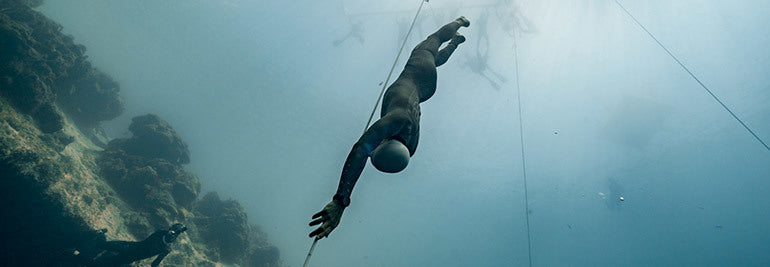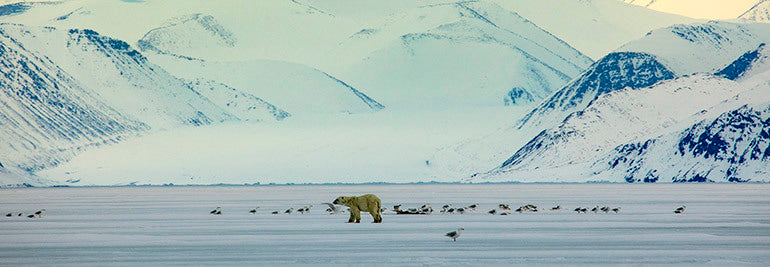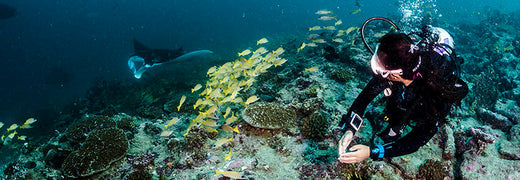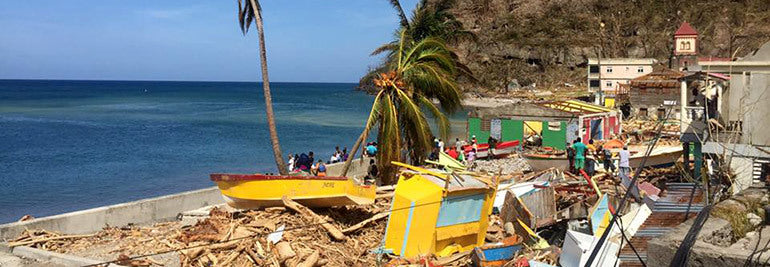

SUUNTOブログ

Ocean plastics are a problem and no one knows better than divers
For anyone who spends a serious amount of time either working or playing in the ocean, it’s a near-impossible problem to ignore: plastics are filling our oceans. Even if your particular stretch of sand and water still appears pristine, it likely isn’t – as these materials (slowly) break down, they become microplastics – an ever more difficult problem to understand and deal with. In Long Island, the Bahamas, home to world-champion freediver William Trubridge and world-class freedive location Dean’s Blue Hole, it’s an everyday problem. We talked to the man who lives quite literally in the ocean what he is doing about it.
This is an issue you care about.
I have to – it’s in my backyard. Worldwide, plastic pollution – we reached the tipping point a long time ago. The Queen of England has banned single-use plastics from the castle! I’m an ambassador for the Ocean Conservation Alliance, run by Doug Woodring, who was one of the original people to discover and explore the Pacific Garbage Patch. His organization has done a lot for our oceans with things like their Plastic Disclosure Project – where they help businesses track their plastic use and offset it, much like companies do with the carbon footprint.
What does the ocean plastic problem mean for you?
Locally here – especially on my island – Long Island – the swell and tradewinds push garbage all to the north end of the island and it all collects in the bays and coves. And Dean’s Blue Hole is one of them. So we organize cleanups during events and competition, and we keep a bucket and just chuck in a little bit each day.
Where is the garbage coming from?
There’s a lot of theories about how plastic is getting in the water, and I think a lot of them are misguided. A lot of people blame cruise ships, but that’s not the case – you can see it in the trash itself.
More than half of the plastics that wash up in the beaches in the Bahamas are these little plastic bags of drinking water – in poorer countries, they get most of their drinking water from little 250 ml bags. They just tear off a corner and chuck it in the rubbish – but the rubbish ends up in the sea. And we’re downstream from them.
A huge amount of the plastic waste is those plastic bags. There’s also Petrol cans, cheap fishing nets. We’ll grab 20 or 30 toothbrushes in a day – the kind sold in Haiti or the Dominican Republic. They don’t have the infrastructure for waste management. Words are in French or Spanish. For us, there’s no question where it’s coming from!
And not only does the trash pollute, it doesn’t degrade, it just turns into smaller pieces – microplastics. For every plastic bag we see, there are thousands of millions of smaller particles you can’t see. Those all enter the food chain. So sea life is basically eating plastic all the time. And we’re at the top of that food chain. That can’t be good. Huge quantities of toxins are in the fish that we eat, and it’s killing sea life as well.
How can divers help?
The most effective way for divers is to help is to reduce their own use – less single-use plastic. Straws. Bring your own bags to the supermarket. Awareness of that is becoming more common – A lot of regions - cities, countries, are banning plastic bags. There is a ground shift movement to less plastic.
That’s in the developed world. But we also need to see that in the less developed world, and it’s a lot more difficult there. When you’re visiting those kinds of countries, put pressure on the local businesses, to take a more thoughtful approach to recycling and use.
And talk about it. Because most people simply don’t know. If you go into a supermarket in Honduras, talk about it. The more people that bring that message, the better. It will have an effect.
Doing cleanups and tackling that end of the problem helps, but not as much going to the source. Changing your own behavior and leading by example.
You also have some pretty crazy ideas about how to help.
One of the things I wanted to do, and so far it’s been a failure: I’d love to get the Bahamas to convert plastic to diesel. We have to ship in every once of diesel in the islands. There are machines – they’re not cheap – but you chuck in plastic and outcomes diesel. But in the end it’s quite effective if you have a good central hub. That’s a profitable way of cleaning up, but the initial investment is quite high.
You’ve also gone out on a limb about the plastic water bags.
Yeah – you know, some beaches are just carpeted with these bags. There are machines that obviously create this bag. The business that makes these machines in American, and basically aware of the fact that they’re creating a huge amount of waste that can’t be managed. So I got the CEO on the phone. Initially he was evasive, but he admitted that particular product that they are supplying is doing a huge amount of damage. His argument was that it’s better than bodies on the streets – people dying from clean water.
It’s hard to argue this defense – because it’s not completely wrong. So I’ve got in touch with a bunch of companies that work with biodegradable materials. Of course, any material that is biodegradable will biodegrade with water. So what’s left? The only other way is to change the whole system. In the Bahamas we use 5-gallon plastic jugs for drinking. But in a lot of those countries they can’t even afford to buy one or two jugs because they’re living so hand to mouth that they won’t even buy a jug. We need a few million jugs, and we get the government to ban plastic bags. Not as simple as it sounds, but we’ve got to get there somehow.
Learn more about the problems facing our ocean at Will’s efforts at the Ocean Recovery Alliance – and please, do what you can to help battle the problem!
Main image © Daan Verhoeven / Vertical Blue

Winning awards and making movies: just another year in the life of Jill Heinerth
If Jill Heinerth didn’t spend so much time underwater, we’d be a little more comfortable making this statement: the Canadian-American explorer is so darn busy, she barely has time to breathe. Between her expeditions, documentary filming, and you know, winning lifetime achievement awards, it’s a little tough to find a free moment – but unsurprisingly for those who know her, Jill was happy to fill us in. (And don’t worry – she’s got plenty of time to breathe.)
First, the awards. What did you win?
At the TekDiveUSA biennial conference, I was surprised with the Lifetime Achievement Award from the technical diving industry. In a fun tradition, they run a cave diving line into the audience to surprise the recipient. I was then blindfolded and had to follow the safety line to the stage while a show about my life was playing for the crowd.
It came with a trophy… and quite the compliment.
The award was a perfect little action figure of me in my diving and camera gear that was made by an artist in Poland. The citation read, “For a lifetime of consistent contribution and discovery that has opened up the field of technical diving.” But what really humbled me was that I was described as "our generation's Cousteau."
I still feel quite speechless. I am the first woman to be recognized for the honor.
Congratulations! On to the future. Where are you going to be this summer?
Filming in the Arctic, filming with French-Canadian filmmaker Mario Cyr. We’re working on a film documenting climate change, dramatic changes in the sea ice. We'll be working with local Inuit elders to hear about their observations and adaptations. We’ll be in Arctic Bay, Repulse Bay and Greenland.
You’re in a hurry.
The climate in the Arctic is changing twice as fast as anywhere else on earth. The sea ice sets up later and breaks up earlier each year. In fact, we had to move up our filming by a month due to the receding ice. Our climate change doc is being thwarted by climate change! Our Inuit hosts called us and recommended that we hurry north as soon as possible due to unprecedented break up this year.
So basically: ice is melting way to fast.
If we lose Arctic sea ice, we lose an important regulating function on global temperature. The white ice reflects the sun's rays back into the atmosphere. The darker open sea, absorbs heat, further increasing the feedback loop that rises ocean temperatures and ultimates affects the global circulation of water currents. Furthermore, both the people of the north and the wildlife rely on sea ice. The Inuit call the sea ice, "the land" since it represents their hunting ground and their ability to travel to other places. The wildlife also hunt on "the land.”
This is a big problem!
The entire food web of the Arctic relies on sea ice. From the algae beneath its surface that feed the zooplankton to the polar bears that roam in search of seals, all organisms use the ice as a part of sustaining their feeding activities.
To learn more about Jill’s Into the Arctic on the Edge film project, check out the website – and be sure to check out the teaser for her film below.
WATCH ARCTIC ON THE EDGE

What you absolutely, positively, must bring and do on your first dive holiday
Packing for vacation should be easy – a couple swimsuits, a pair of flip-flops, some sunscreen, and you’re good to go – right? Not if you’re going diving. To say it’s an equipment-intensive sport is putting it lightly. Good news: you can get your tanks at almost any dive location – so at least you won’t have to put down for overweight baggage fees. But there are a few key items you’re probably going to want. Suunto’s Alec Jones has spent the good part of a decade at the dive paradise of Sharm-El-Sheik as a dive instructor – so he’s a qualified expert.
First off, do a holiday
A dive holiday may sound extravagant, or expensive – but it’s one of the best ways to expand your horizons. “You’ll encounter different conditions, visibility, wildlife – you name it. Diving is about exploration!” says Alec.
Your own fins, mask and snorkel
Fins and masks are pressure points – you get the wrong fit, and you’re going to be uncomfortable all day, and that makes diving less than fun. At that point you might as well chuck in a snorkel. “Rental kit often isn’t so nice,” says Alec. “Even if you’re just getting into it, I really recommend getting a decent, properly fitting mask, and some decent fins.” And if you’re someone who would call themselves a germaphobe, you might, uh, want your own wetsuit, too.
Dry Bags, sunscreen and hydration
You’re probably going to be spending a lot – a lot – of time on a boat in the sun. Sunscreen you know about – but what you might not realize is how much you’ll get dehydrated. Add in that a lot of other counties purify their water – you won’t be getting minerals you’re used to – and it’s a recipe for dehydration. “A lot of people would come to dive in Egypt, get sick, and blame something in the water – but it’s actually dehydration!” says Jones.
Another great thing to bring along? Small or medium-sized dry bags to drag out on the boat – useful for electronics or just keeping a dry t-shirt nearby.
Gaffer tape and zip ties
Why? You don’t know yet. Just bring ‘em.
A dive computer you know
Your dive computer is an essential piece of kit – and since it’s a little complicated, it’s great to go with something you know. The new Suunto EON Core is an easy-to-use, Bluetooth®-equipped dive computer that will log every meter of every dive. With your own kit, you can pre-load it with your own dive plan – a nice bonus. Another hot tip? A portable power bank to keep your dive computer charged.
Keep going further
Water covers over 70% of our planet – there are lots of places to go. “For Europeans, the Red Sea is really close,” Jones says. “But why stop there? There’s Indonesia, the Philippines, Malaysia, the Cenotes in Mexico, the Florida Keys, Costa Rica, the Galapagos – the list is really endless!”
Do everything right, and you’ll have the experience of a lifetime – and you might even make some new friends. “I’ve seen a lot of solo divers come down and make friends that they’ll keep for life,” says Alec. “Now they come back year after year to dive together.”
READ ALSO
A pro diver’s essential tips for newbie divers
10 tips to take amazing underwater photos

You haven’t understood free diving until you’ve read this
Freediving is not, as one might expect, a journey of meters or minutes – it’s the journey of a lifetime. While in the global scale of distance and time, a free diver’s trips to the relative shallowest depths of the oceans are small – the position one must put one’s self in to make such a dive requires immense dedication, patience, training and time.
Few can tell that journey better than world champion William Trubridge. In his new book, Oxygen, he invites us to join him for his life’s journey, and trust us when we tell you, what a journey it has been. To call his childhood ‘unorthodox’ would be putting lightly, or perhaps politely – born in England to world-wandering parents, he was traveling the world before he could walk. About that, in fact – he had to learn to walk twice. The first time on a boat – and the second time when the ground wasn’t moving beneath his feet. With his older brother and parents, they traversed the world, taking harbor in the Galapagos, the British Virgin Islands, South Pacific, and more. There were times where they wouldn’t see land for months at a time – including a 5500 km crossing to the Marquesas.
The obsession with the deep came early. Diving was a necessity of boat life. He recalls being impressed with their father, who dove 18 m to work on the boat’s anchor. When they met another boat family, led by a Frenchman named Benoît who could dive to a depth of 27 m, that depth seemed as deep as the sea would go. Little did William know he’d be trying for four times that depth a couple decades later.
Will sat down to write the book – for several hours a day, over many months after encouragement from friends and his agent Jason Chambers. He’s long-held fascination with the written word – something he delves into over the pages of his memoir – but the long format was something yet untried. One thing should be made clear: although you can learn a lot about the sport, it’s not a tutorial on free-diving.
“I tried to write it in a way that would explain the sport to those who haven't encountered freediving, giving a glimpse of how beautiful and peaceful it is,” says Will. “I also tried to include descriptions that might allow other freedivers to get a feel for my approach, the way I train, and why I've stuck with the sport.”
The meandering pages take you both through the days of Will’s life and the depths of his dives, digging into both the mindset he needs to be in to make them, the risks of being underwater, and how free diving happens mostly in your head. For someone who’s already gotten a taste of the deep, or someone who wants to, it’s a must-read.
Find Will’s book available as paperback or eBook on Amazon.com.

The freedive community raised $26,000 to help this hurricane-ravaged Caribbean island
To say Jonathan Sunnex’s life has taken a few unexpected turns is a bit of an understatement. How else would a Kiwi from Ngaruawahia, New Zealand come to be living on the little bay of Soufriere, in one of the least-known islands in the Lesser Antilles? But that question was hardly at the forefront of his mind while he sat at the airport in Miami – stranded thanks to a little storm called Hurricane Maria.
The entire Caribbean and much of the southeastern United States had a tense hurricane season – first Hurricane Irma barreled its way across multiple islands, then just five days later Hurricane Maria sprung up in its wake. While Dominica dodged a major hit with Irma, Maria was another story. The island suffered a direct hit – and almost three months later, much of Dominica still is without power or running water.
The fact that it was a pretty big wrench in the works of Sunnex’s biggest project of the year – the Blue Element Freedive competition – was essentially an afterthought. For Jonathan and girlfriend Sofia Gómez, it was a tense two-week wait in Miami, wondering if when they returned home they’d find their dive school – and their home – still standing.
“We were in Roatan for the World Championships,” says Sunnex. “We wanted to get back early to prep for Blue Element. It was scheduled for the 11th – 17th of October, but Maria hit at the end of September. It went from tropical storm to category 5 in just a few hours.”
At first he was hopeful the event could still go on – but as reports came in about the damage done to the island, expectations were quickly lowered. “We were really hoping our dive platform was still there,” he said. “Communication with people onsite was impossible.” But one of the first things he did? He set up a GoFundMe and reached out to the free dive community – hoping to raise a €1,000 of donations for food, water and other supplies. They ended up hitting their goal, and even bettering it – raising $26,000. The highlight moment? Jonathan – whose long, flowing hair had been growing for ten years – got on Facebook Live and shaved his head and cut off his beard, raising $700 in just twenty minutes.
With the bounty of the successful fundraiser ready to share with the island, he started making his way home – but it wasn’t a straight shot. “I flew to Martinique, and just started picking up supplies – water, chainsaws, literally thousands of dollars’ worth of food – whatever we thought we could fit on a boat,” says Johnny. “Then I hitched a ride with Piwi Croisieres Calypso over to Dominica.”
When he arrived on the island, he was ‘mostly speechless’. "The island is the greenest tropical forest – super dense bush – it looked more like a firestorm hit it,” he says. "No foliage. Bark ripped off of trees. No green left. It was a dry dusty desert. Piles of debris. Giant trees on the beaches, debris two meters high.” The damage to their home was real – the house/school was flooded, and the platform had been dislodged and blown to shore. They lost their competition rope, worth about $1500 – although it was later recovered, and they hope to repair it.
Without a doubt, the competition was off – so Sunnex and the competitors already on the island diverted their attention to clean-up and aid, cleaning beaches, roads and helping repair the island’s infrastructure.
There’s still much to be done – but Sunnex is confident the Blue Element freediving contest will return next year – and probably not during hurricane season. “The conditions here are impeccable,” he says. “Calm and flat, no current, water’s warm, perfect.”
Want to pitch in and help Dominica? See the Blue Element GoFundMe page here.

Saeed Rashid takes over @suuntodive Instagram
Who are you and where are you from?
My name is Saeed Rashid, I live on the south coast of England in the town of Bournemouth, 20-minute walk from what I think is one of the best sandy beaches in England.
Where do you dive?
I travel a lot and mostly to Asia and like most people in Europe, the Red Sea, which is really above all over places my underwater playground. But I also try and get a few dives in at home, I have a local pier in Swange, Dorset that is a great place to chill out in the shallows with my camera
What inspires you in the underwater world?
I know it sounds a cliché, but just being underwater inspires me, finding a cool little critter that I’ve never seen before inspires me, helping others to capture their dives in a photograph inspires me. I love seeing the work of other photographers of places and things I’ve never seen and imagining the excitement they had at the time of taking them.
How would you describe your photography style?
I’m not sure I have a style, if I do it is in constant flux and changing all the time. I just try and capture each image as I see it
Is there a story you wish to tell with your images?
When I’m teaching underwater photography I try to get my students to think of themselves as not photographers but as storytellers. There is also a story to tell, however big or small.
You also teach photography. Can you tell us a bit about that?
I have a day job in which among many other things I teaching photojournalism at Bournemouth University. But I’m also very fortunate to be able to travel and teach underwater photography in amazing locations. I work with a couple of UK travel agents (Oonas Divers, Ultimate Diving and The Scuba Place) where I take small groups away to some wonderful destinations such as Indonesia, Philippines and Egypt and help them with their own photographic skills. I teach all levels, it’s great seeing those that are both completely new start to understand the basics and I’m able to get them to banish the blues of their images and as well as those that are pushing their skills further and producing amazing imagery. The best feeling in the world is when one of my own students teaches me something I never knew before, that really is great.
And where to follow your adventures?
I have a website focusvisuals.com that I try to keep as updated as possible.
I’m also all over social media:
www.facebook.com/focusvisuals/
www.instagram.com/saeedrashid01/
www.twitter.com/saeedrashid
Follow @suuntodive on Instagram














































































